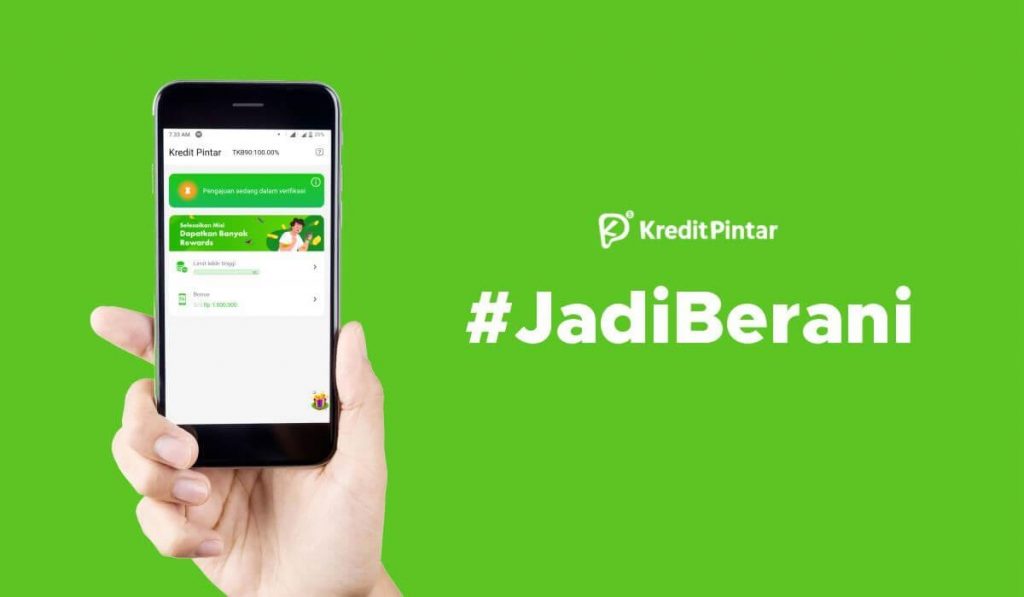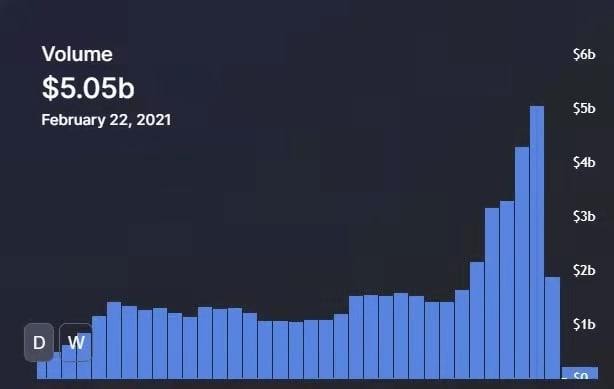Texas, USA, 2nd March 2021, ZEXPRWIRE –
- With the advent of Bitcoin and distributed ledgers, enterprises and supply chains now have the opportunity to delegate trust to a third party, a decentralised, immutable, single source of truth.
- Delegating trust to an impartial and immutable third party reduces friction between businesses and creates a huge number of potential new business opportunities.
- Hedera Hashgraph is the enterprise-grade distributed ledger poised to dominate this space. Having launched 18 months ago, its technology is already being deployed commercially.
- Yet its native coin, the Hbar, is hugely under-valued, well below its 2019 all-time-high.
As a buyer of advertising space, the agency you have hired slaps you with a bill for the number of times that your ad was viewed. How can you be sure that they are telling the truth? If your agency is Adsdax, no problem. They don’t tell you how many ads were viewed – the Hashgraph network does (adsdax). If you are a US retailer and a customer presents you with a coupon, how can you be sure that it’s genuine? You can check its validity on the Hashgraph network (Coupon Bureau).
That’s bye-bye to advertising and coupon fraud that costs industries hundreds of millions of dollars annually. Imagine what it will do to the fake pharmaceuticals industry worth over $200 billion – good riddance. The potential applications for this technology are mind-blowing. Hashgraph is being deployed in Syria to protect civilians from being bombed by their own government (hala systems). Hashgraph is being deployed to protect school children across the USA from Covid19 (Covid-19).
As you can see, distributed ledgers aren’t just about cryptocurrencies, storing and transferring value. Their real value potential is far, far bigger.
The network service that makes these use-cases possible is the Hedera Consensus Service (HCS), and if you follow this link Dragon Glass to a Mirror Node, (a 3rd-party read-only node that doesn’t take part in consensus), you will see from the pie chart (bottom right) that the vast majority of transactions on the network are HCS ones and not cryptocurrency transfers. HCS is already being used by several enterprises, and its adoption will explode in the coming months and years.
If you want to see how Hedera Hashgraph is leading the pack in terms of adoption, click here and click twice on ‘TX 24hrs’. As I write, the network is executing over 7 million transactions daily, 4 million more than its nearest competitor. As Hashgraph is the only network attracting meaningful adoption outside the Cryptosphere, this gap will only widen. I anticipate that it will do so exponentially.
The recent addition of the Token Service (HTS) will compound network growth as enterprises tokenize their products and assets to trade, create liquidity and manage their supply chains.
Hedera Hashgraph will bring profound changes to nearly every industry, and yet very few people are aware of it. For those who know and understand, it’s a chance-in-a-lifetime to invest in the Internet’s future. Holders of the native coin, the Hbar, stand to make huge gains over the coming months and years as the trust layer of the Internet is rolled out.
Yet, in spite of its huge potential, Hashgraph is ranked at only around 70 by market cap (Coingeko). So, what makes Hashgraph’s technology so compelling, how does this translate into an appreciating Hbar price, and why is the Hbar so undervalued?
1 – The Hashgraph consensus algorithm – the best tech in its class
Hashgraph is a distributed ledger, just like Bitcoin. However, unlike the Bitcoin network that can only do around 5-7 transactions per second (tps), the Hashgraph network can do in excess of 100,000 tps in a single shard, or sub-network. With sharding, tps is essentially limitless. Unlike the Bitcoin network, where transaction completion is probabilistic (with every subsequent block, your transaction is more likely to have succeeded), Hashgraph’s transactions are final within 3-5 seconds. So what? Other networks can do this.
What makes Hashgraph stand apart is that it can do this with the highest grade of security possible mathematically: asynchronous Byzantine Fault Tolerance, or aBFT. Other networks achieve speed and throughput by making security compromises, such as choosing a leader to make decisions. Hashgraph’s network is genuinely leaderless, and although it is still only a permissioned network (you need permission to run a node) with only 16 nodes currently, the fact that it is leaderless makes the protocol itself as decentralised, and hence as secure as you can get. And without a leader making decisions, you get a massive extra bonus: you can apply fair timestamps to transactions and thus achieve fair ordering. This makes it possible to run stock markets (did my bid arrive before yours?), dark pools, any kind of ticketing system, supply chain management between multiple manufacturers and suppliers, and so on.
How does the network achieve this?
It’s actually quite simple, and can be summarised with the following phrase:
‘Gossip about gossip, with virtual voting’.
The problem solved by the Hashgraph consensus algorithm provides the explanation: once a transaction has been sent to the network, the computers (nodes) on the network cast votes on whether or not the transaction is valid.
But how does any one node know the votes of all the other nodes?
Developed decades ago, voting algorithms are exceedingly complicated and impractical to implement on networks because of the immense amount of communication required. That is, until Dr Leemon Baird, Hashgraph’s inventor, made an extraordinary discovery: when a transaction is broadcast, or gossiped to the network, if you include information about the last transaction that was sent and the last transaction received (that’s the ‘gossip about gossip’ bit), every node can build an entire picture (the Hashgraph) of exactly how information flowed through the network.
Which means, node-to-node, I know EXCACTLY what you know, and how & when you found out about it. And because we are both running the same consensus algorithm, I know how you would vote, so don’t bother telling me. I will cast it for you. That’s the virtual voting bit – no further communication required.
And, although transactions are received by different nodes at different times, because each node can see exactly how and when all the information flowed through the network, they simply select the median timestamp for each transaction. That’s how you get the fair ordering.
As consensus is achieved without sending any additional information, the Hashgraph’s consensus mechanism is 100% efficient. Its speed is limited only by the speed of the Internet. Of all its competitors, Hashgraph will be the primary beneficiary of the roll-out of 5G.
Could a new consensus algorithm make Hashgraph obsolete? It’s possible, but unlikely given that Hashgraph is aBFT, mathematically the most secure you can get, that gossip is the quickest way possible to distribute information on a distributed ledger, and that Hashgraph’s algorithm requires no additional communication to achieve consensus. There will be incremental improvements, but with Hashgraph, distributed ledgers have likely already reached their hard limits.
Incredible efficiency comes with huge cost benefits to network users, and we are already beginning to see enterprises migrating from Ethereum to Hashgraph due to network congestion and horrendously high fees. As I write, a transaction on the Ethereum network costs $15.31. On the Hedera network, an HTS (token) transaction costs $0.001. An HCS (consensus) and a crypto transfer both cost $0.0001.
On Ethereum, minting a token costs around $80. On Hashgraph, it’s $1. Examples of migration below:
#1 Coindesk
#2 Swrm Labs
2 – Tokenomics: the case for an appreciating Hbar price
Users of the network pay transaction fees. For an HCS transaction, the cost is $0.0001. The cost of transacting is priced in USD, but the medium of payment is the native cryptocurrency, the Hbar. Users of the network buy Hbar from exchanges and spend them as they use the network services. As tps increases, so does the demand for Hbar. Hence, you get upward pressure on the price.
Currently, the network executes 7 million transactions daily, which equates to around $250,000 in annual revenue to the network. When the Coupon Bureau completes the rollout of Hedera verification of the 350 billion coupons issued annually in the US (Coupon Bureau ), that’s $35 million in annual revenue to combat the $300-600 million in annual coupon fraud (Source), and that’s just one use-case.
When Proven-DB (Proven-DB) launches Hedera-secured database services, imagine all of those databases holding sensitive personal information – the potential growth is incredible.
The Hbar/USD price is recalculated every hour, so users of the network can be agnostic to the Hbar price. If the Hbar price depreciates, the amount of Hbar required to transact appreciates correspondingly, creating a stabilising effect on the value of the Hbar.
Those who believe in free lunches might ask why one would choose to transact on a network that charges for its services when there are networks on which you can transact for free. Networks have to be paid for. Some ‘free’ networks get around this by inflating the supply of their coins and paying nodes in newly minted coins, but that introduces risks. If the price of the native coin depreciates, nodes have less money to maintain the network, or you have to increase the rewards by minting more coins, creating a downward spiral in coin value. If the cryptocurrency’s price depreciates to the extent that the oil price did in 2020, bye-bye network. Enterprises want network stability, and they are used to paying for services. They also want price stability, which is why transactions are priced in USD.
Like Bitcoin, there is a fixed total supply of Hbars – 50 billion. However, only 7.4 billion have been released into the market, and that raises concerns of a negative impact on the Hbar price owing to future supply inflation. There is a practical reason for this: Hashgraph is a Proof-of-Stake (POS) network, where the coins serve not only as a medium of payment, but also as a security mechanism.
A major potential threat to distributed networks is a Sybil attack. Malicious actors stand up thousands of nodes to disrupt or take it over. In POS, the voting power of a node is determined by how many coins are staked to it. With this mechanism, attackers need control of over 1/3rd of the coin supply in order to disrupt the network. With 2/3rds, they can take it over. POS networks have been hijacked in the past, and those interested should study the fight for control of the Steem network.
In order to be secure, the coins need to be valuable and widely distributed, so the coins will be released on a conservative schedule as the network grows. For now, the network is permissioned (you need permission to run a node) and therefore immune to Sybil attacks. It will only become permissionless when the coin distribution and value requirements are met.
In order to encourage staking, network fees will be divided between those operating nodes and the coin-holders, i.e. coin holders are paid dividends, the amount TBC.
In answer to the inflation concern, I anticipate an exponential growth in adoption of the network in comparison to a flattening curve of coins released as a percentage of the current supply. Exponential growth in adoption, and hence demand for Hbar, would offset any inflation risks to the Hbar price. You can find a 5-year release schedule here: PDF Link
Of the total current supply of 7.4 billion, 4 billion coins were released in 2020. And yet, in spite of this supply increase, the price appreciated 300% over that 12-month period. When major projects are launched on the Hashgraph network, Hbar supply inflation will become little more than a rounding error.
3 – Why the Hbar is so undervalued
Although there are concerns over inflation which I have attempted to address above, the network faces some significant additional challenges, mainly due to the way it is perceived by those who currently hold influence in the distributed ledger sphere.
For a start, it’s patented, and for the Crypto-purists, or Crypterati, that’s a big red flag.
They do not like its governance. Hedera Hashgraph will be governed by 39 (currently 18) major multinational enterprises. Google, IBM, Boeing, LG, DLA Piper, Deutche Telecomm, Tata Communications and the University College of London are among the council members, with membership spread all over the world and in diverse industries. The most recent addition to the council is Standard Bank, based in South Africa. Although council members are term-limited (6 years maximum) and do not have any rights to the treasury (unreleased Hbars), they have control over the codebase, which is open-review and not open-source. Anyone can stand up a Bitcoin node. Not so with Hashgraph, at least for the moment. This flies in the face of crypto ideology, as does control over the network by large multinationals which they instinctively distrust.
For enterprises, however, this kind of governance makes perfect sense: a distributed ledger for enterprises, governed by enterprises. Enterprises would far rather have the codebase in the hands of large multinationals with their reputations at stake than a cabal of programmers hiding behind pseudonyms. Once all the seats are filled, each council member will have just over 2.5% of the vote, and it’s difficult to imagine governors such as Google and the University College of London colluding nefariously.
The network cannot be forked, which is also also frowned upon. If members of a community disagree, they should be allowed to go their own separate ways, as happened with Bitcoin Cash, Bitcoin Gold, Ethereum Classic and so on. For enterprises, however, the risk of forking is unacceptable. Imagine that you have tokenised your house on a network, which then splits in two. Can you sell it twice? I don’t think that would be particularly fair. For enterprises offering tokenisation services, it would be a disaster.
Finally, there is the issue of marketing. Most other coins are heavily marketed in order to inflate prices so that the coins can be sold to pay for maintenance and development, and for the benefit of the founders and early investors. During the current bull market, we have seen the value of many coins, like the ‘joke’ coin Doge, explode due to the extraordinary crypto-hype on social media. By contrast, Hedera’s price has risen a modest 3x in 2021 as I write.
Hedera’s marketing machine is focussed firmly on enterprise adoption rather than coin-holders. The objective is to build real value that will, in the end, sustain an upward Hbar price trajectory for decades to come. You can gauge its success simply by looking at the number of transactions executed on the network. Blocktivity.info measures these in days. Before too long, Hashgraph’s transaction rate will be measured in hours, and then in seconds. Hedera believes resolutely that adoption is the key to success.
There is also a critical strategic reason for focussing on adopters of the network rather than prospective coin-holders:
4 – Regulatory compliance
Hedera’s position is that the Hbar is a utility coin and not a security. It has worked very closely with the SEC at every step to ensure that it doesn’t fall foul of regulation in the way that XRP has. If you read the SEC charge sheet against Ripple, you will quickly understand the wisdom and foresight of this extraordinary team:
compliance
Dentons and DLA Piper, two of the biggest law firms in the world, did their due diligence before becoming not just advisers or partners, but owners of Hashgraph LLC. As owners, they embrace all the responsibility and liability that comes with it.
Such a commitment inspires confidence: large enterprises will not risk building on top of a network that might be found negligent from a compliance point-of-view. This alone is a huge tailwind for Hedera in its pursuit of enterprise adoption.
5 – Objectives
Hedera’s goal is to become the trust layer of the Internet. Such vision and ambition requires a long-term strategy. The more you get to know the team, the technology and the direction in which this project is headed, the more you will appreciate Hedera’s wisdom for taking the hard road.
It is a project unlike any other.
We are in the midst of a crypto boom, and those of you who experienced the Dotcom boom and bust know how this story ends. The vast majority of those hyped companies vanished, and those building real value such as Microsoft, Google and Amazon went on to conquer the world.
Such is the trajectory of Hedera Hashgraph. Those who have had the temerity to buy and hold Hbar for the long term will be richly rewarded.
It’s just a matter of time.
Twitter: @ngtenor – Author
HBAR News
Published by Peter G. Uliano @peteruliano
The post Hedera Hashgraph – the future Google of Distributed Ledger Technology appeared first on Zex PR Wire.







